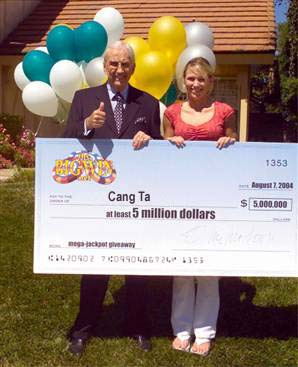 Yowza! Looks like the State Energy Conservation Office (SECO) won the stimulus dollars scratch off, big time. SECO, which usually has a budget of around $2 million, will get an additional $233.8 million of federal money due to the stimulus bill. That’s quite a sum that will be available to the state for energy efficiency and renewable energy projects, green jobs training programs, and building retrofits.
Yowza! Looks like the State Energy Conservation Office (SECO) won the stimulus dollars scratch off, big time. SECO, which usually has a budget of around $2 million, will get an additional $233.8 million of federal money due to the stimulus bill. That’s quite a sum that will be available to the state for energy efficiency and renewable energy projects, green jobs training programs, and building retrofits.
The Select Committee on Federal Economic Stabilization held a hearing last week to make sure that SECO could handle this influx of funds and spend it wisely.
SECO’s response, in a nutshell, was “No Sweat.” Which I certainly hope is true. This is an incredible amount of money, and should be used as efficiently (yuk yuk yuk) as possible.
The agencies didn’t ask for help making policy changes to draw the dollars down from Washington, and they generally reported they had programs already in place to administer the money.
Robert Wood, the director of local government assistance and economic development, said the State Energy Conservation Office would have no problem spending the $233 million expected to flow through the State Energy Program. While there were some strings attached, the strings would not require SECO to make any changes not already planned pre-stimulus.
Apparently there is a provision attached to the stimulus funds requiring the state to update building efficiency codes, but SECO already had planned to adopt those codes.
Floor Pass also reports that after the hearing,
SECO director Dub Taylor confirmed to reporters there was an additional federal provision that would require the state to show it had a plan to reach a rate of 90 percent compliance with those energy codes within eight years. Taylor said because the mandate was new, SECO had not yet determined how it would meet the requirement.
One of the reasons that SECO is so nonchalant about accepting this huge sum is that they will be able to dump the majority of funds into the existing LoanStar program. The LoanStar program is a way to provide schools, public agencies, and commercial entities that want to do efficiency upgrades with the necessary capital. LoanStar allows these groups to borrow money at very low interest rate and slowly pay back their loans with savings from efficiency upgrades. LoanStar currently has a budget of $119 million, all of which has been fully allocated out — that is, the program is so popular that all available funds have been borrowed already. The program has a sometimes years-long waiting list — which means that these projects are certainly shovel ready. LoanStar currently has 46 pending projects that have already been approved and are waiting for funding. Funding existing projects alone will eat up the majority of these funds.
SECO has also been allocated money for Research & Development and education, and has 6 existing programs that they can dump that money into.
After hearing that almost all of SECO’s funding will be dumped into LoanStar, my first concern was that only government and commercial entities would receive aid — what about regular folks that want to weatherize their homes? Fear not — Additional federal funding is coming down the pipeline directly to HUD (Housing and Urban Development). More money is also going to rural, non-entitlement areas — that is, cities with populations less than 50,000 or counties less than 200,000. Rural efficiency projects will receive something along the lines of $46 million for energy efficiency and water conservation programs. This may sound like a lot, but $100 million worth of programs have already been applied for. In normal years, a fairly small number of projects apply for funds, but in these hard economic times, nearly 10 times as many entities applied to implement energy efficient, money-saving projects.


